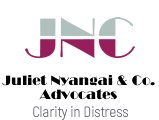
TERROR SPEECH AND THE LEGAL LACUNA
Presently, the use of internet and ICT-enabled platforms is not considered a luxury but a requisite especially in the realms of commerce, economics, entertainment and even geopolitics. This article explores how this exponential rise of social media provides avenues for terrorism actors, sponsors and sympathizers to broadcast their appeal and justify their actions. It argues that there is a legal lacuna in correctly identifying terror speech and therefore, There is need for a nationwide civic
education effort.
Social Media
Ever since the 2009 Arab Spring revolution, Social media continues to play a critical role in shaping
and influencing public opinion beyond what traditional media achieved in previous decades. US President Barack Obama, perhaps the most outstanding politician to have ever mobilized votes and finances online still maintains and runs a powerful social media presence. A recent poll by Ipsos
Mori in the United Kingdom just ahead of the 2015 General Elections found that seven in ten Britons
(71 percent) feel that social media platforms are giving a voice to people who would not normally
take part in political debate.
This is particularly the case for young people (88 percent of 18-34s, compared with 56 percent of those aged 55+). The study further found that on balance, people also feel that social media platforms are breaking down the barriers between voters and politicians and political parties (by 50 percent to 28 percent). Again,young people are most positive (60 percent agree that social media are breaking down the barriers, compared to 39 percent of those aged 55+).
While all these positions point to the positive, there is an emerging discourse about the role of social
media in spreading, heralding and sustaining terrorism ideologies. Such ideologies seek to promote a
preferable image of terrorism that downplays the criminal intent and complicity. Through a diverse range of communication tools including social media, terrorists have been able to amass vast influence that has seen most States with active terror cells looking for better intelligence,
legal and deterrence approaches to combat these ideologies. This article seeks to contribute to this ongoing discourse by presenting a legal analysis that should be struck when balancing between protecting fundamental freedoms of expression and the emerging trend of promoting terrorism
known as terror speech.
Does Freedom of Expression cover terror speech?
Terror speech, which can be construed to include speech acts, artistic and creative expression that
promotes, justifies or even rationalizes terror, acts of terrorism or the perpetrators is not considered
as part of freedom of expression whether broadcast on traditional or even social media.
This is because, the motive shared across by many terrorist groups is violence that targets mass casualties based on their religion, political persuasion and lifestyle. Article 20 of the International Covenant on Civil and Political Rights (ICCPR) states that ‘any propaganda of war shall be prohibited by law’ and goes on to add that ‘any advocacy of national, racial or religious hatred that contributes to discrimination, hostility or violence shall be prohibited by law’.
The same is envisaged in Article 33 (2) and (3) of the Kenyan Constitution 2010.
Press Freedom
Freedom of the press is a fundamental right of person recognized and protected by the law of most
contemporary states. This right is closely associated with freedom of speech. The 1948 Universal Declaration of Human Rights (UDHR) under Article 19 acknowledges the right to freedom of opinion and expression. Furthermore, Article 19 of the International Covenant on Civil and Political Rights (ICCPR) and Article 9 of The African Charter on Human and Peoples’ Rights both guarantee the right to freedom of opinion and expression and this right includes freedom to hold opinions without interference and to seek, receive and impart information and ideas through any media.
In Kenya, freedom of expression; freedom of the media and access to information are recognized
rights and fundamental freedoms clearly envisaged in Articles 33, 34 and 35 of the Constitution. All
these provisions however, come with a rider of responsibility that requires those who seek to use
them as legal defences, to appreciate the limits. Article 19 (3) of the International Covenant on Civil
and Political Rights is especially outstanding.
Emerging Patterns of Terror Speech
Scholars have argued that the affordability and broad reach of social media platforms such as Facebook, Twitter and Youtube has allowed terrorist groups to communicate and also air their extremist messages not only among themselves but also among the public. A clear example of terrorist groups making use of social media to convey their messages was the January 2009 release of an audio recording purportedly by Osama Bin Laden posted on Islamist websites calling for a new jihad over the Israeli offensive in Gaza.
Terrorist groups not only use social media and the internet to relay messages and communicate but
also to obtain information. In December 2014, according to ABC News online, in a joint intelligence
bulletin issued overnight by the FBI with the Department of Homeland Security, officials strongly urged those who serve in uniform to scrub their social media accounts of anything that might bring unwanted attention from ‘’violent extremists’’ or would help the extremists learn individual service members’ identities. Moreover, it should not be forgotten that in 2013, Dzhokhar Tsarnaev and Tamerlan Tsarnaev, two brothers wreaked havoc at the Boston Marathon International Event, using basic internet received knowledge to create homemade bombs.
Indeed, the internet and social media are widely cited as the prime hub for ISIS recruitment not only
in Sub Saharan Africa but also in Western audiences thus social media is an effective recruitment tool. Peter Bergen, author of the Longest War: The Enduring Conflict between America and Al-Qaeda and a Professor of Practice (FSC) School of Politics & Global Studies at Arizona State University states that ‘online networks are often seen as a boon for would-be radicals, but in fact, many American citizens attracted to the Islamic State propaganda have triggered investigations
because of their inveterate use of social media to proclaim their sympathies’ oblivious that this
constitutes terror speech.
Extremist groups especially those devoted to the cause of terror seek to obtain global, national and local legitimacy through use of the internet and social media by ensuring that their sponsors, members and sympathizers promote their ideologies through their individual accounts.
The San Bernadino terror attack that saw a couple Rizwan Farook and his wife Malik storm into a
Christmas party for employees of the San Bernadino county public health department where Farook
worked wasn’t just unique due to the 14 fatalities, but the fact that Malik pledged bayaat- the oath of
allegiance to the Islamic State on her Facebook Page. What emerges is are social media companies
such as Facebook obliged in the aftermath of terror attacks to restrict and possibly deface such
accounts to halt sharing of such messages that tend to glorify such acts?
Al-Shabaab
A prime objective of terrorist groups is to produce widespread fear and panic so as to cause submission among the public or influence Government decisions, legislation or other critical decisions. The internet and social media is a strategic tool for fulfilling this as they can
then spread messages, most often propaganda which causes to intimidate, harass, weaken or discredit
the government and especially the security forces. Internet uploaded video recorded decapitations popular with radical Islamists have a great impact on the public and are neither technically demanding nor do they require a lot of resources in terms of weaponry, tactics or intelligence.
Most recently when the Kenya Defence Forces camp under AMISOM in Somalia was attacked by Al-Shabaab, it is alleged that the bodies of some soldiers were dragged by the militia through Somali streets and these photos filtered through certain social media sites. It should be known that the sharing of such gory pictures which aim to fuel the Terrorists’ objective of instilling fear among the public amounts to terror speech and is actually criminal.
Are current legal tools responsive to social media driven terror speech?
Freedom of expression and the freedom of the media under Article 33 and 34 of the Constitution are
limited under Section 66 of the Penal Code, in regards to prohibited publication and broadcast contrary for purposes of limiting the publication or distribution of material likely to cause public alarm, incitement to violence or disturb public peace. While it requires a surgical analysis
of what actually constitutes incitement to violence and disturbance of public peace, the prosecution
should clearly identify the communication, publication and broadcasting that seeks to promote terror
speech as a justifiable cause of action and the publication and broadcasting whether in traditional
or social media that seeks to merely inform the public of the gravity of the situation.
While it is true that preventing, responding and mitigating terror attacks remains the preserve of
state security agencies, perhaps it is high time for a joint initiative between the office of the Attorney
General, the Director of Public Prosecutions, the Judiciary, Law Society of Kenya (LSK), Bloggers
Association of Kenya and the Media Council of Kenya to provide civic education especially
on matters of social media and the reportage of terror and terrorism. Such an exercise should
acknowledge that governments must respect established internet norms such as freedom of
expression and privacy when attempting to regulate social media. But on the other hand, citizens must understand that the same freedoms do not cover terror speech.
A study by Jumia Kenya, The Growth of the Smartphone Market in Kenya indicates that in the
next 5-10 years, over 75 percent of the Kenyan population will have access to a smart phone
which means that the possibility to be exposed to terror speech will increase. The time to inculcate
values and virtues of a terror free society is now. Will the incoming LSK leadership take up this challenge?
This Article appeared in the LSK Magazine, The Advocate, Volume 1, Issue 5, March-June 2016
Ms Nyang’ai is an International Law Expert, Principal Partner at JNC & Co. Advocates and a Researcher on Counter Terrorism and Organized Crime Legislation.
She can be reached on info@jncadvocates.com



Leave a Reply
You must be logged in to post a comment.